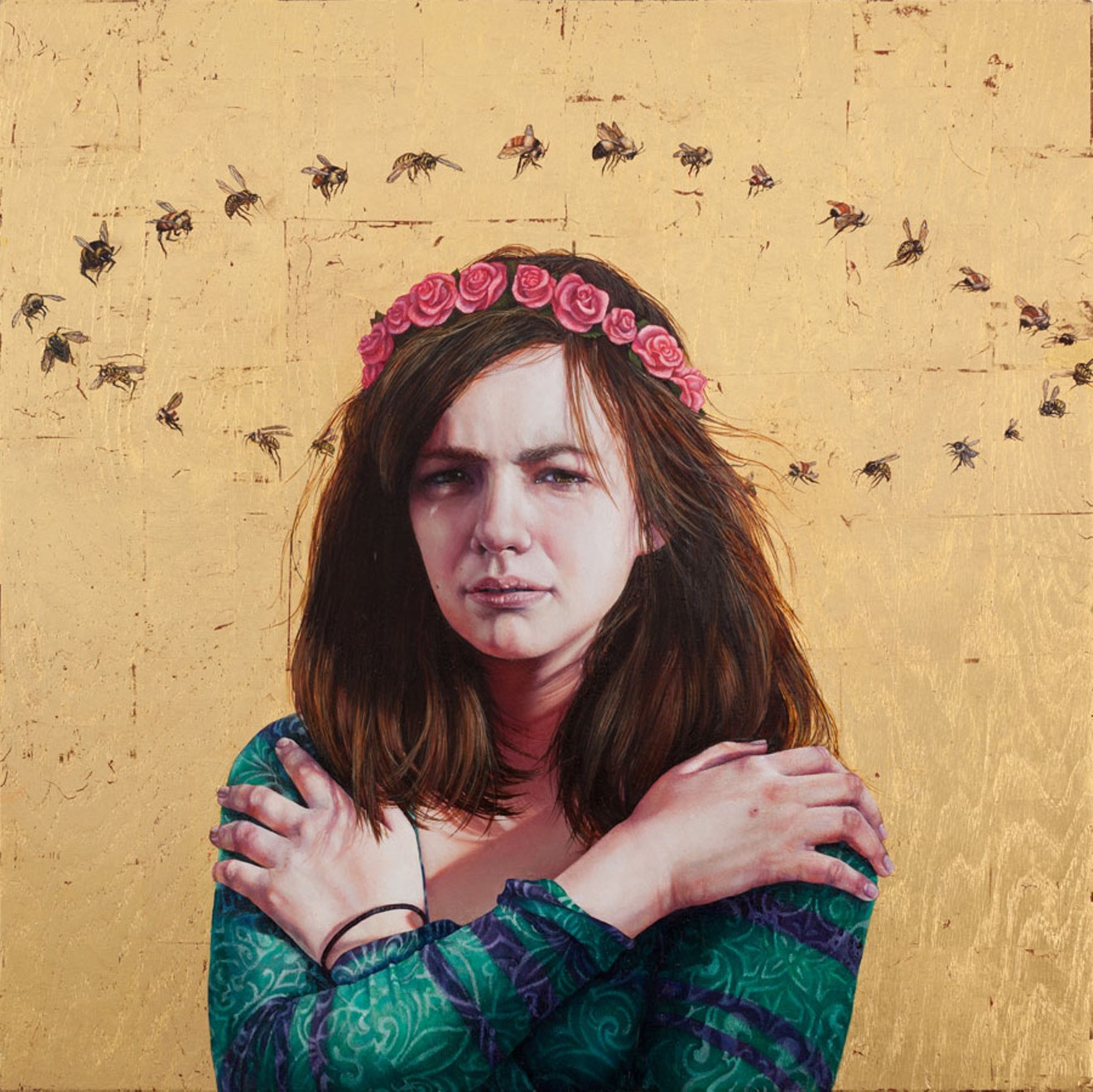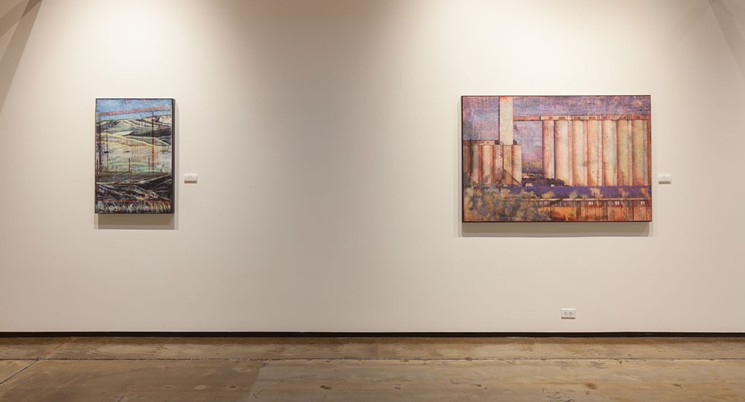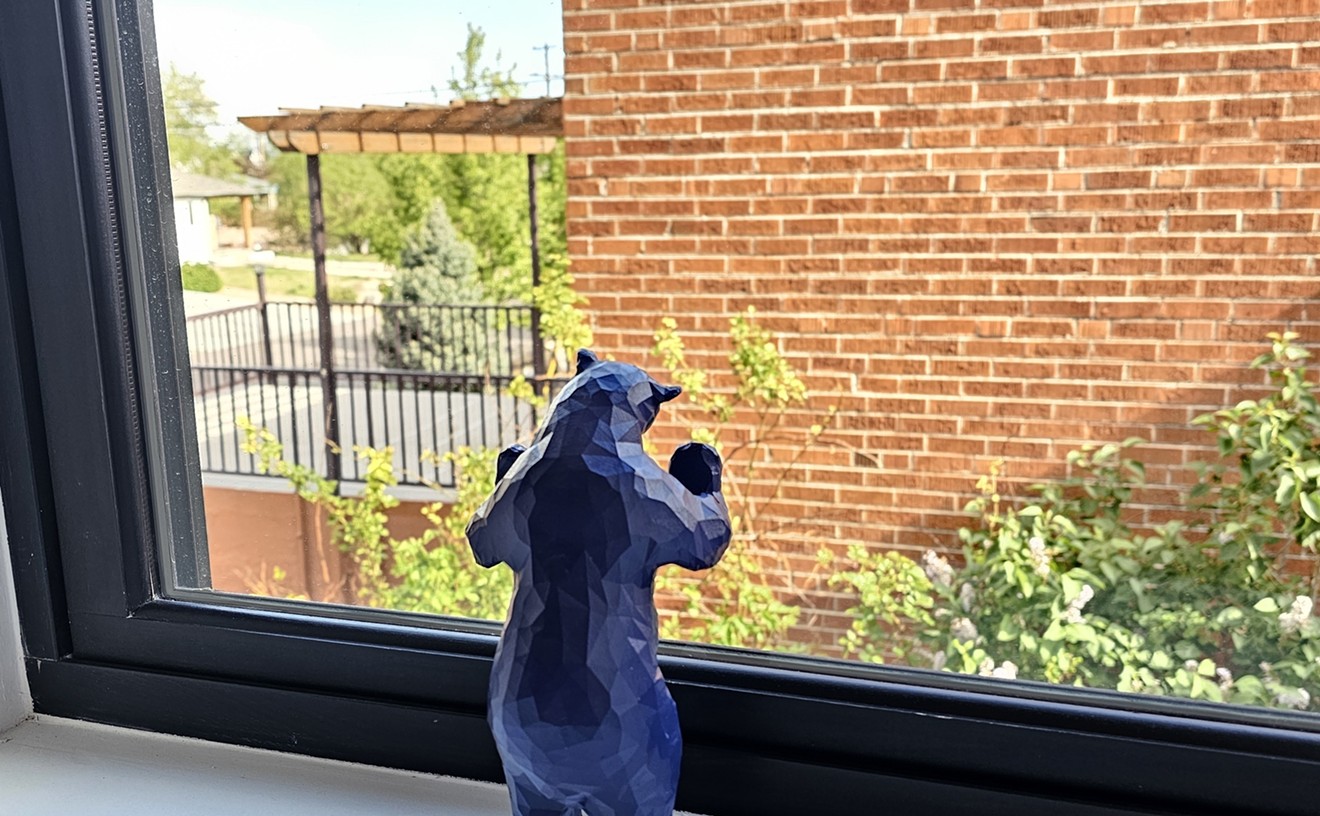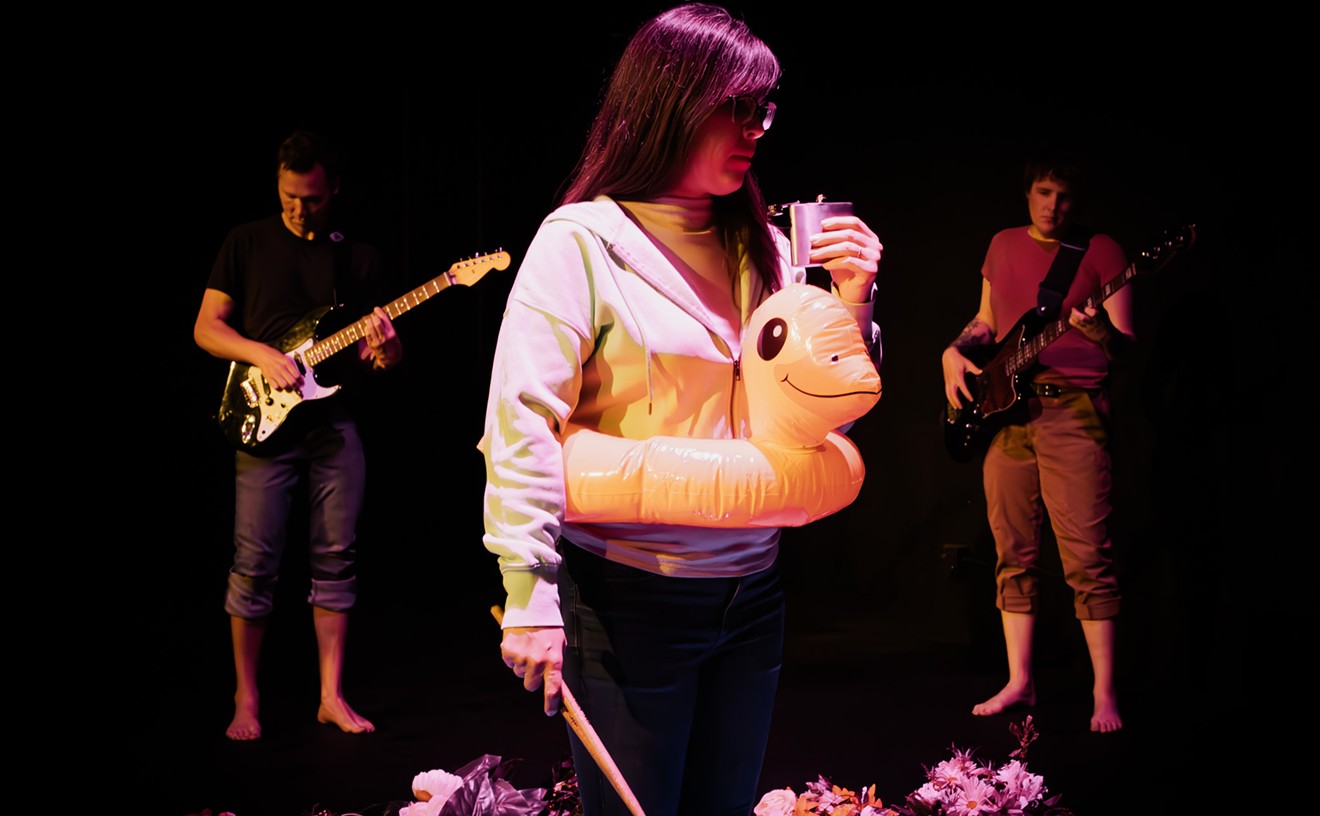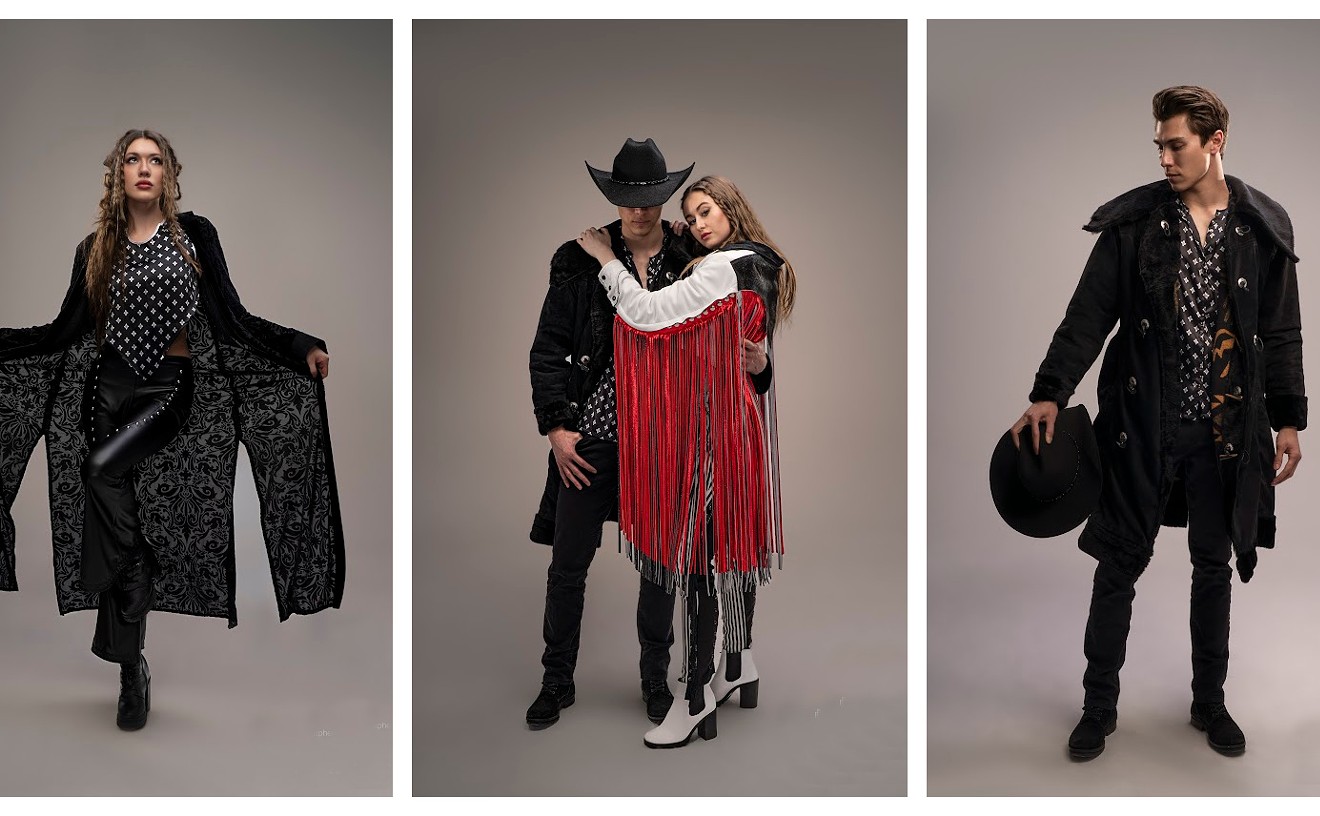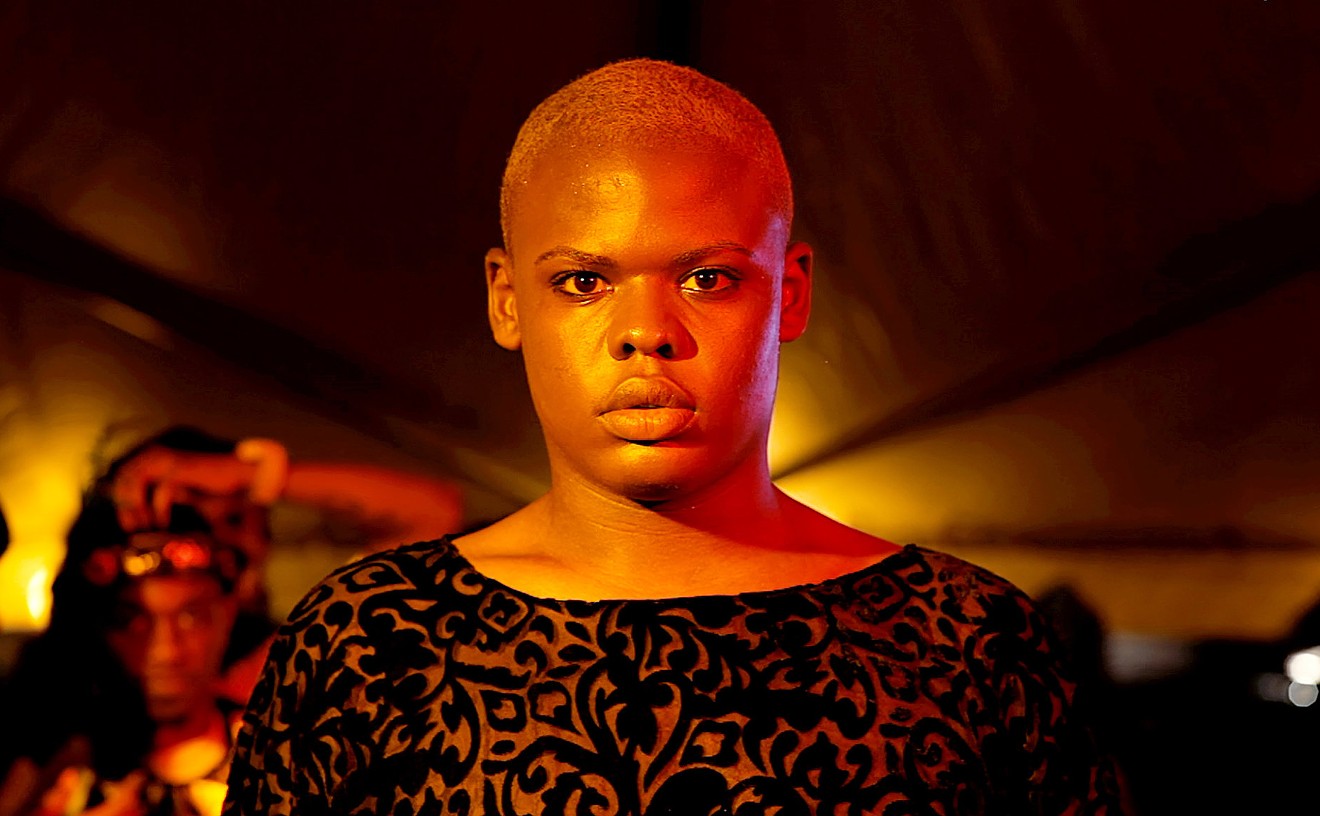Although there are landscapes and what could be considered still lifes — broadly speaking, anyway — at Havu, the depiction of the figure plays an important role in two of the three solos and makes an appearance in the third.
The lineup begins with a section of the gallery given over to Wes Magyar, which is made up of contemporary realist paintings by well-known Colorado artist Wes Magyar. Several are informal portraits that carry the suggestion of some unknown and enigmatic narrative. In “The Call,” an oil on canvas, a young man in a hooded parka appears to be sitting in a rowboat heading for an iceberg that looms behind him; in “Collect,” a businessman in a suit and tie is caught holding a bundle of twigs as he walks down a skyscraper-lined street.
Less expected from Magyar is “Intruder,” a landscape of bare trees in a forest, with a vaporous passage obscuring the middle of some of the trees. The artist’s renderings tilt more toward the painterly and away from the photographic, with the latter being the main current in contemporary realism. That’s particularly interesting in this case, given that Magyar has a parallel career as a photographer.
In the adjacent space, Ricki Klages offers photorealist techniques in breathtaking and meticulously done paintings by Wyoming-based artist Ricki Klages that depict both the figure and the landscape. “Bronwyn’s Halo” offers a hyperrealist depiction of a non-realistic scene. Gazing at the viewer is a young woman squinting in the light; she’s wearing a crown of roses and has a halo of bees flying above her head, with the entire scene set on a metallic gold ground that is otherwise featureless. Also carried out in a hyperrealist style is “Sanctuary,” which shows a bare tree with many sawed-off limbs; in a puddle in the foreground is a reflection of the tree. While “Bronwyn’s Halo” has a traditional composition in which the “action” fills the middle of the painting, in “Sanctuary” the top of the tree has been unexpectedly cropped out of view. Klages has also created many small, icon-like landscapes presented in multi-part frames in the form of an upwardly facing arrow, including one based on “Sanctuary.”
The last of the solos, which begins on the main level but is mostly installed on the mezzanine, is Shelby Shadwell, dedicated to another Wyoming artist who does remarkably precise photo-realist charcoal-on-paper drawings. In a figure study in the form of a self-portrait, Shelby Shadwell depicts himself as a street kid squatting in front of a wall. Although the charcoal has been clearly applied in fluid gestures, with some of the qualities of a quick sketch, the feel for accuracy is nearly photographic. The gritty urban look of this piece is pushed further in Shadwell’s other works, a spectacular series of incredible still-life images of tied-up black trash bags that have a magisterial monumentality despite their humble subject. The quick-sketch character of the self-portrait is even more pronounced here, as the artist puts a slashing line here, thick even strokes there — and somehow the result looks almost like a photo.
Over at Goodwin Fine Art, the duet Habitat presents painter Sharon Feder, a Colorado artist who creates semi-abstracted street and industrial scenes, and Arizona photographer Kate Breakey, who contributes photos of birds, reptiles and flowers printed on glass or done as photograms.
The Feder paintings in the front gallery struck me as experimental, since they’re markedly different from her earlier works. Although the show includes a number of variations on an established Feder theme that exploits the geometric aspects of perspective, in the more recent pieces, the lines she uses to convey pictorial depth are overt. Her earlier paintings were simpler and more straightforward, with a precisionist edge; that’s been replaced by ghostly and vaporous constructions that are sometimes placed right at the picture plane as the architectural scene falls away from the surface. In “Next, No. 10,” the receding street of neglected storefronts is seen behind a screen of nearly transparent lines, smudges and scuff marks. The elements of the picture, like the plants and the fence in the foreground, are barely there, rendered so that the surface beneath them is revealed.

“Baby Rattlesnake,” by Kate Breakey, pigment ink on glass with gold leaf.
Courtesy of the artist and Goodwin Fine Art
The photos on glass are presented salon-style in a dense cluster on the south wall, and the photograms are shown the same way on the west wall; both displays are small and intimate, and each has been separately framed using either gilt or black-painted moldings in traditional patterns. The setup and the subjects, who were photographed as though they were specimens in some kind of Victorian natural-history museum, lend the whole Breakey show a goth-like feel. The photos were all so compelling that it was impossible to pick a single standout.
The artists at Havu and Goodwin are all taking their own routes to the same goal: using old-fashioned representational imagery in some kind of contemporary way.
Wes Magyar, Ricki Klages, Shelby Shadwell, through September 23, William Havu Gallery, 1040 Cherokee Street, 303-893-2360, williamhavugallery.com.
Habitat, through September 9, Tina Goodwin Fine Art, 1255 Delaware Street, 303-573-1255, goodwinfineart.com.

